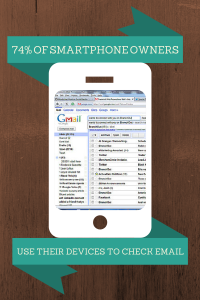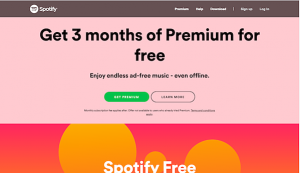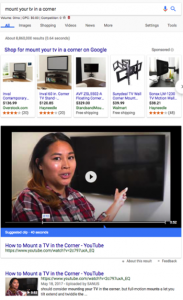Subscribers in your database that consistently fail to take action could be hurting you more than you think. Contributor Kyle Hendrick suggests tactics to get them engaging with your brand again.

In a recent survey, Yes Lifecycle Marketing (my company), found that nearly half (45 percent) of marketers ranked email as their top priority for 2018.
Obviously, we know email is kind of a big deal. What surprised me is that the next closet channel, website, was a distant second with only 24 percent of marketers ranking it as their top priority.
What does that really mean? First, it continues to support email marketing’s ROI and reputation as a well-established channel. Second, competition for that inbox engagement is only going to continue becoming fiercer.
The factors contributing to the issue
Looking at the last two years here, we saw an increase in emails sent of 12 percent year-over-year (YOY), with an even greater increase in Q4 (15 percent.) Between flooded inboxes and email remaining a top priority in 2018, it is now more difficult than ever for marketers to retain subscribers’ attention.
Currently, users can actively opt out of email lists by unsubscribing or hitting the ‘SPAM’ filter within their email service provider (ESP). Typically, this link is buried at the bottom of the email, and Gmail made headlines back in 2014 when it introduced the “unsubscribe” button at the top instead. Apple followed suit in 2016 with its introduction of the Apple iOS 10 unsubscribe button.
These developments caused a frenzy among marketers. Surely if it’s easier to unsubscribe, then there would be a mass exodus from marketing emails, right? The answer was a triumphant ‘no!’ Instead, marketers discovered that easy unsubscribe buttons actually helped weed out unengaged subscribers and non-purchasers lingering within marketers’ email database. And that led to improved deliverability.
However, the silver lining of active opt-outs (subscribers who have unsubscribed or hit the ‘SPAM’ filter) does not apply to ‘passive opt-outs.’ I use the term ‘passive opt-out’ to describe the behavior of an email subscriber who no longer engages with your brand but still collects promotional emails for as long as the brand sends them.
It’s been documented that unengaged subscribers who have passively opted out and are lingering in your databases hurt your email deliverability amongst ISPs (Gmail, etc.), and they also make it difficult to measure unsubscribes like we have in the past. Thus, it’s important to monitor the effect of your brand’s ‘passive opt-out’ audience and refine your strategies to avoid them building up like dental plaque. I fully expect the passive opt-out rate to increase and continue to be a major challenge for email marketers in 2018.
What to do about it
To re-engage these passive subscribers and avoid losing potential purchasers, marketers need to proactively shift their email lifecycle messaging and customer loyalty approach. Content needs to become more informative, fun and engaging to prevent subscribers from losing interest and passively opting out.
Note that this doesn’t mean you should send a flood of high-value offers that cut into your margin. Savvy marketers will consider tactics like mixing up messaging cadence, ingesting editorial value-driven content (sticky content), sending re-engagement emails at key lifecycle moments of inactivity, investing in triggers and more.
As you consider my suggested tactics to encourage engagement, remember that not every subscriber or list behaves the same. Run an analysis on your subscribers to find key peaks and valleys to keep subscribers active. Email marketers should incorporate and test these strategies to boost engagement within the time periods defined.
? Mix up messaging cadence. Some subscribers will start to ignore marketing emails if they receive them too often or at the wrong time. Before your audience member becomes a non-participant, use and promote preference centers that enable subscribers to select their preferred mailing frequency and type of email content. Don’t fear sending less! Allowing the subscriber to drive the timing and relevancy will inform you of what they really want.
Additionally, learn what days of the week drive the most engagement. Our data from 2016 found that Fridays garnered the highest engagement, while Saturdays saw the highest conversion rates. Test Thursdays and Saturdays as “fun” sends within the cadence to increase chances that subscribers will engage.
? Try reaching out with unique content on a regular basis. To avoid starting to lose subscribers who have been dormant for a month, maybe you can try to send something special around day 28. That may signal to the inactive subscriber that you have more to offer usual and motivates them to open or click through at a regular cadence.
While you’re at it, spend a little more effort to make sure these emails are personalized. Aside from addressing the subscriber by name, marketers should be honest with their intentions. Most importantly, have fun with it! Subscribers are people at the end of the day, so let them know you haven’t seen them active in a while, miss them and offer suggestions for items similar to what they may have purchased or browsed in the past.
? Invest and innovate your triggers. Triggered emails, which are emails sent in response to specific consumer actions or data, have consistently been shown to have greater engagement than the standard content. There are a plethora of triggers to consider from abandoned cart to a purchase or a current event in their neighborhood. GrubHub, for instance, sends location-based emails for food delivery, triggered by location-based weather conditions, such as snow or rain. Meanwhile, Dunkin Donuts sends emails tailored to sports teams performance.
? Offer unique, value-driven editorial content. Since it’s so easy for subscribers to passively opt out, marketers need to do more to motivate opens and click-throughs. That means learning more about individual subscribers or audience segments, and offering them relevant, timely content that meets their unique needs and isn’t aggressively selling your product.
These emails need to be different from your business-as-usual emails. For example, a brand or retailer that recently sold a slow cooker to a subscriber online could follow up with emails containing ideas for seasonal slow cooker recipes, social forums for slow cooker fanatics to share ideas in, or inspiring ways use a slow cooker that isn’t food related.
With passive opt-outs continuing to be a significant challenge and the competition continuing to heat up, email marketers should be smart and experiment with new tactics to boost engagement. To maximize potential, you should invest in pushing the limits of relevant content while testing into new lifecycle messages to keep your databases healthy in 2018.
Opinions expressed in this article are those of the guest author and not necessarily Marketing Land. Staff authors are listed here.
Marketing Land – Internet Marketing News, Strategies & Tips
(57)








